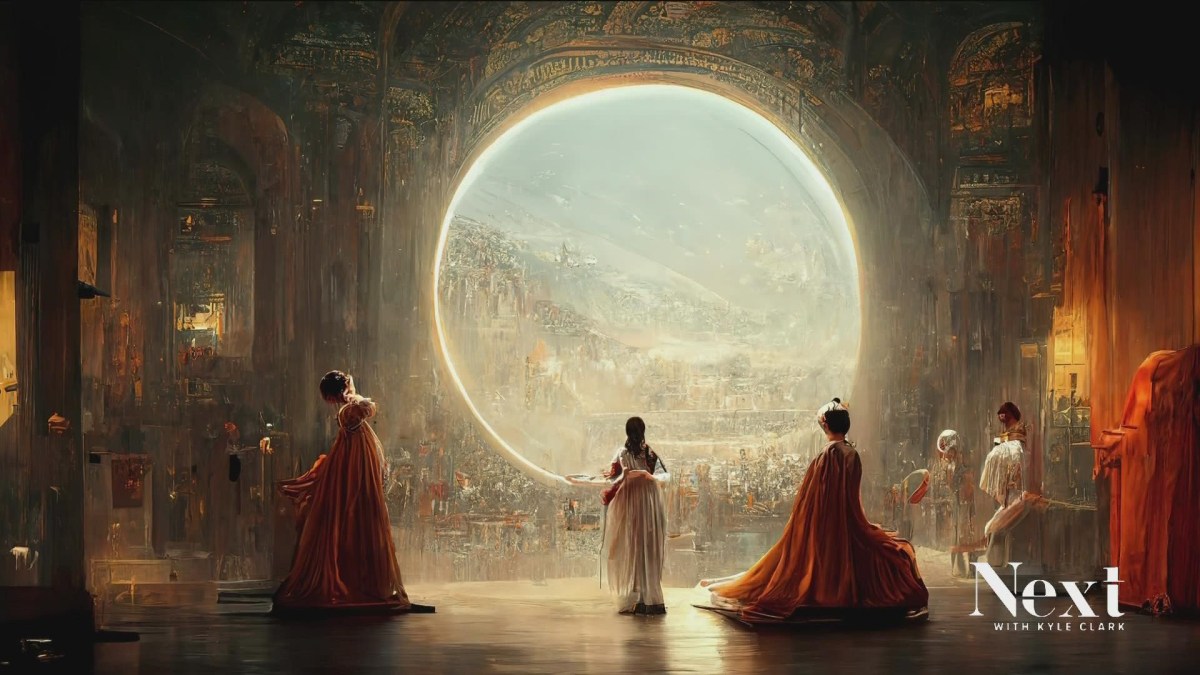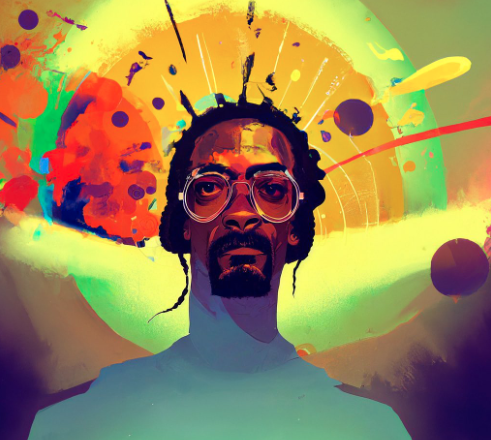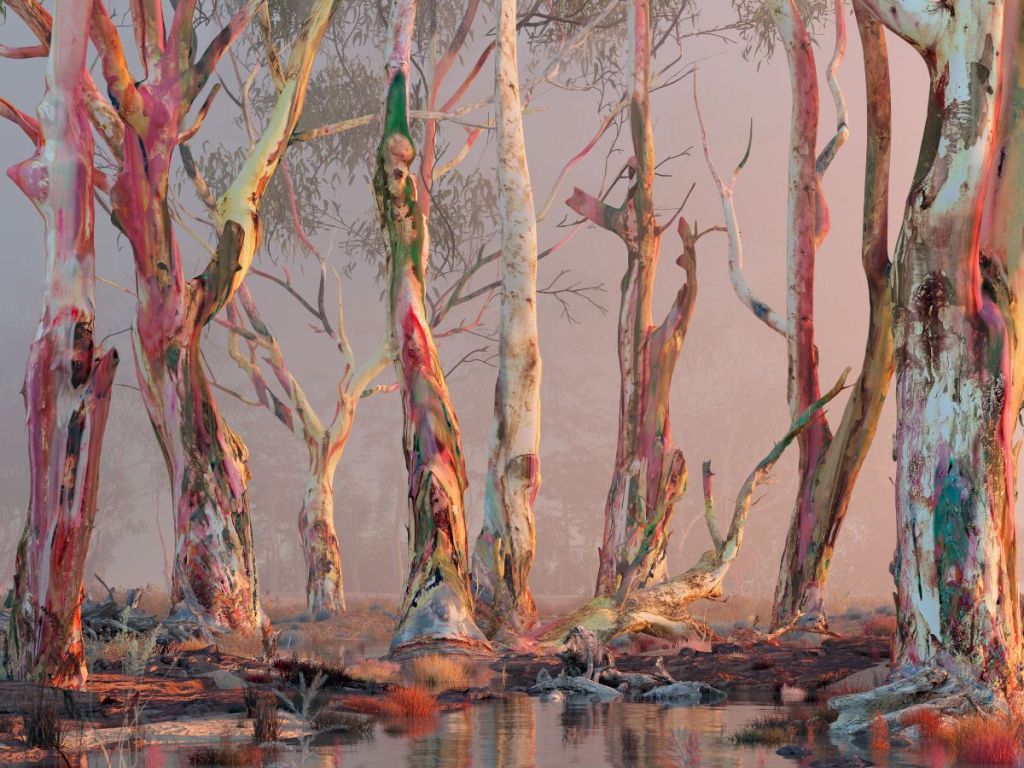AI art: Patient carvings, expressive brushstrokes, and framing moments in time – artists are translators, historians, futurists, dreamers, and rule-breakers. Artists help us make sense of the world and more importantly, of ourselves.
Through stream-of-conscious works, often involuntary, unexplainable, and undefinable, these creations change lives. But what does it mean for humanity when art itself changes?
With the explosion of AI art (also known as AIrt), is this simply technology’s iterative process at play or something else entirely?
The AI art debate
Art has long been controversial. The new wave of text-to-image generative art is no different. And artists have been up in arms. AI artwork, like the image that won the annual Colorado State Fair recently is undeniably beautiful. To the untrained eye, it looked like an acrylic painting. But many couldn’t see beyond ‘it’s AI’ to appreciate the beauty.

The tension’s heating up, with Google announcing a new AI image feature last week.
Since the art world purist’s combustive reaction to Warhol’s screen-printed pop art series of commercial products and famous faces, artists have been ambivalent, to say the very least, about technology.
That fiercely traditional mindset continues today, with portrait artists critiquing cameras and photographers, slamming smartphones and even musicians for the use of auto-tuning.
Tools
Greg Rutkowski, a classically trained artist is however no stranger to AI tools. Although he doesn’t use them himself, his name is a popular text-prompt-and-style inspiration to create Rutkowski-esque works in seconds.
“I’m all for technology. I do it myself when I try to imitate my oil paintings using digital tools. Technology introduces new possibilities. When I’m tired of creating with oils and acrylics, I turn to digital. Both outlets have their own strengths, unreachable on either side. What I create on canvas is far from what I can do digitally. Smelling the paint, seeing the structure, and feeling the brush puts me in a full sensory meditative state, unlike creating through a screen.”
Rutkowski continued by adding that, “The problem I have with AI tools is the lack of copyright. No one asked if they could use my work to train these programs. I believe these tools should not use work from living artists. It’s a copyright infringement that’s not being controlled or regulated, a violation of human rights. I’ve heard style can’t be copyrighted, but I think it should be in some way.”
Rutowski wants to see a distinction between what’s created by a human hand versus a machine. While he doesn’t want to stunt technological growth, he’s calling for a focus on global AI regulation as “many of these tech companies are using gaps in law to profit from.
AI art: Philosophy
Many argue that this isn’t just a conversation about art. It’s a philosophical conundrum, a cultural inflection point, and an example of an industry changing as Web3 matures.
Aussie VR and crypto artists, Giant Swan and Mankind, see the AI art debate differently. The pair have their work displayed IRL at Oshi Gallery in Melbourne’s Federation Square digital billboards.
“I feel like AI upending the art world is a beautiful headline akin to the old ‘banana on the wall’ moments that litter art history. It misses the point and the potential of these tools completely. Consider the people who are struggling to express themselves with no use of their body right now and give them the tools to show what they’re feeling. What would Steven Hawking’s voice be like with tools this powerful? I think that’s where the real value is,” Giant Swan said.
For another artist, Mankind, AI art doesn’t move us further from our humanity, it brings us closer. The man behind the Triple M logo and former music video director for Australian band, The Living End, was in the art world for many years before a near-death experience. It resuscitated his life and career, turning to AI to transmute hope in new ways.
“All of this will just become art. We don’t call it canvas or print art. It’s simply art. AI is just one of the methods and technologies we use at the moment. In my opinion, AI gives artists superpowers. The software is developing quicker than I can keep up with.”

Simplicity?
It’s not as simple or easy as people might think, he added, “If you don’t know the ins and outs of image-making, you’ll still have a difficult time getting a good-looking visual. It’s not magic. Artists come with their knowledge of lighting composition, history and style, all of which will improve the outcome.
Mankind rejected the notion that AI art was easy, suggesting that, “Just like the camera doesn’t just ‘take a photo for you’, the AI can’t just spit out a good image. He recognised that AI art has become “dirty to some people and that they think it has no artistic value”. However he defended view by outlining the complexities of the process involved:
It’s not AI or traditional art. I usually use an image-to-image prompt and put a blurry cut together image montage sketch, like I would in Photoshop. That becomes my foundation which I put into AI and guide where I want to with it – lighting, influences, style, resolution etc. Instead of it taking me a whole day to get one image, I can get 100 in a minute. I pick my favourites and move them into Photoshop to tweak to my liking. It’s usually 80% there and I touch up the rest.”
For his works in Oshi Gallery, Mankind used AI for the sketching and ‘outpainting’ process – where he typed in what he wanted added and the image changed, but not the original context.
On the topic of attribution, Mankind said even traditional artists don’t create in a vacuum or bubble, without having seen or been influenced by anything. “We think people are being devalued but it’s just the pace and power of technology.”
Communication
Argubly, if AI art allows people to communicate something they weren’t able to before, it’s something worthwhile. At least that’s what Adobe and Shutterstock think. Their moves into AI hint this at mass-market adoption. Adobe is adding AI capabilities in Photoshop and Lightroom. Shutterstock will also start selling AI-generated stock imagery.
What’s more interesting is Shutterstock’s announcement to compensate creators whose work is used to train AI art models, through a ‘Contributor’s Fund.’ This is likely inspired by Getty Images banning the sale of AI art because of copyright concerns and future licensing headaches.
In other words, the rest of this story is yet to come.
“We should be more cautious about everything that is human”, traditional artist Rutowski added. “At this rate, with how fast technology is evolving, everything that is created by a human should be considered as something that’s divine. Because soon, within a few years, maybe 10, a human thing will be a rare thing. We must protect it, at all costs.”
Art has always questioned itself. Is this art? What is art? What does art make you feel?
Along with its quintessential aesthetic qualities, that has always been its real power. To ask. To surprise. And to shock. To provoke. It’s reassuring to see it still is … and AI-art, it would seem, is simply its next evolutionary ‘movement’.





